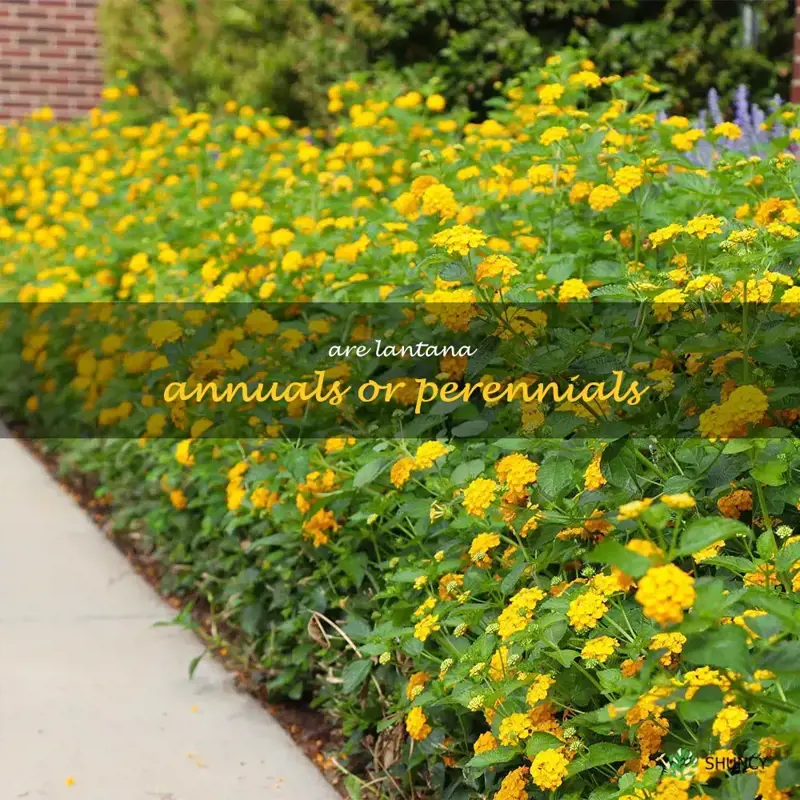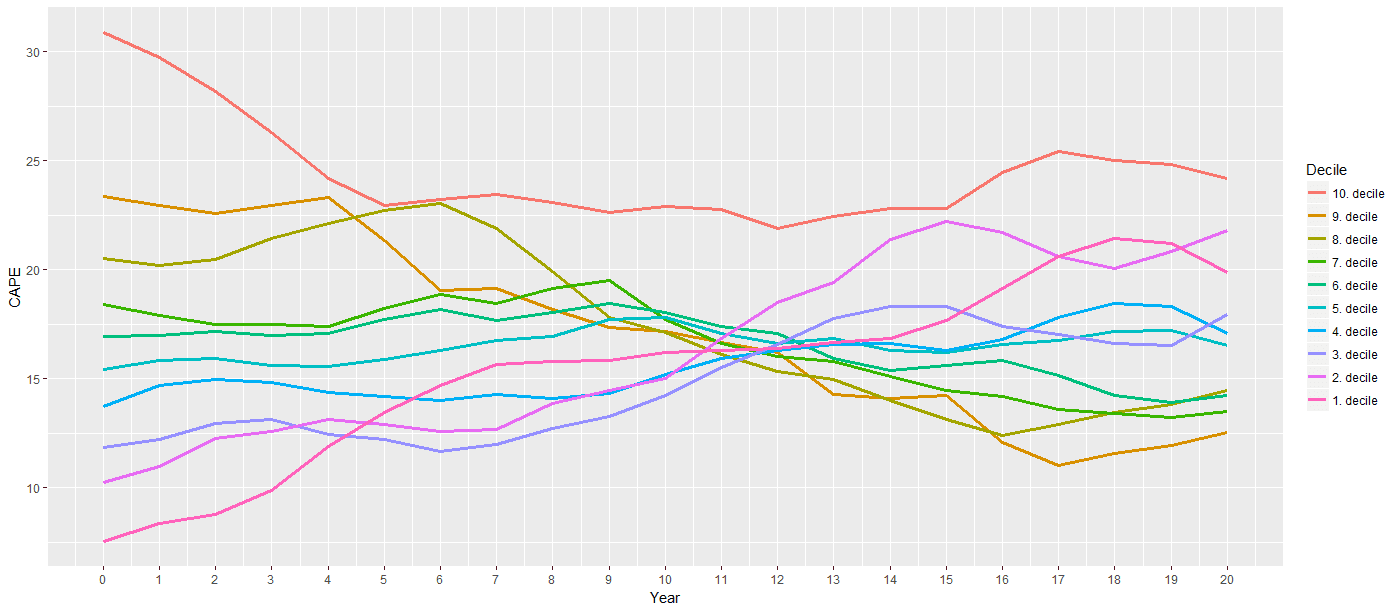Perennials Or Annuals: The Ultimate Guide For Flower Garden Planning

Table of Contents
Understanding Perennials
What are Perennials?
Perennials are plants that live for more than two years, returning year after year to grace your garden with their beauty. This longevity makes them a cost-effective and environmentally friendly choice for many gardeners. They offer long-term beauty and require less frequent replanting compared to annuals. However, they do have some drawbacks.
-
Advantages of Perennials:
- Long-term beauty and continuous color over multiple seasons.
- Cost-effective in the long run, reducing the need for yearly purchases.
- Often more environmentally friendly due to reduced waste from frequent replanting.
- Many perennials attract beneficial pollinators, contributing to a healthy garden ecosystem.
- Some perennials offer interesting foliage even outside of their flowering period.
-
Disadvantages of Perennials:
- Slower initial growth compared to annuals; they may take a year or two to reach full maturity.
- May require more time and effort for establishment, including proper soil preparation and potentially winter protection.
- Some perennials may need dividing every few years to maintain their vigor.
- Certain varieties may require specific soil conditions or sun exposure.
-
Popular Perennial Examples: Coneflowers, hostas, daylilies, lavender, salvia, black-eyed Susans, peonies, and sedum are just a few examples of the diverse world of perennials. These flowering plants offer a wide range of colors, heights, and bloom times, allowing for creative garden design.
-
Key Features of Perennials:
- Return year after year, providing ongoing visual interest.
- Offer diverse blooms and foliage, contributing to a layered and textured garden.
- Can be divided and propagated, allowing you to expand your garden inexpensively.
- Many perennials require minimal maintenance once established.
Choosing the Right Perennials for Your Garden
Selecting the right perennials is key to a successful garden. Consider these factors:
- Climate Zone: Research perennials that thrive in your specific USDA hardiness zone to ensure their survival through winter.
- Bloom Times: Choose a variety of perennials with staggered bloom times to ensure continuous color throughout the growing season. Think about which months you want the most color!
- Soil Type and Sun Exposure: Select perennials that are suited to your soil's drainage, pH level, and the amount of sunlight your garden receives.
- Mature Plant Size: Research the mature size of each perennial to ensure proper spacing. Overcrowding can lead to competition for resources and reduced flowering.
Understanding Annuals
What are Annuals?
Annual plants complete their entire life cycle – from germination to seed production – within a single growing season. This rapid growth makes them ideal for instant color and impact.
-
Advantages of Annuals:
- Fast-growing, providing quick bursts of vibrant color.
- Wide variety of colors, forms, and textures readily available.
- Perfect for filling gaps in your garden or creating striking seasonal displays.
- Many annuals are easy to grow from seed, offering an economical option.
-
Disadvantages of Annuals:
- Require replanting annually, increasing the cost and effort over time.
- May require more frequent watering than established perennials, especially during hot, dry weather.
- Their short lifespan means you'll need to plan your planting schedule carefully for continuous color.
-
Popular Annual Examples: Zinnias, petunias, marigolds, sunflowers, impatiens, cosmos, and nasturtiums are just a few of the many annuals that can add vibrancy to your garden. These flowering plants offer a huge range of colors and textures.
-
Key Features of Annuals:
- Provide quick bursts of color, ideal for immediate impact.
- Offer a wide range of colors and textures, allowing for creative combinations.
- Perfect for containers, hanging baskets, and seasonal displays.
- May require more frequent watering than perennials.
Selecting Annuals for Your Garden Design
When choosing annuals, consider:
- Overall Aesthetic: Select annuals that complement your existing garden design and desired aesthetic, whether it's cottage garden charm or modern minimalism.
- Complementary Colors and Textures: Choose annuals that complement your perennials or other garden features, creating a harmonious and visually appealing space.
- Light and Soil Conditions: Opt for heat-tolerant or shade-tolerant varieties depending on your garden's conditions.
- Succession Planting: Plan for succession planting by sowing new seeds or buying new plants every few weeks to ensure continuous blooms throughout the season.
Perennials vs. Annuals: A Direct Comparison
| Feature | Perennials | Annuals |
|---|---|---|
| Lifespan | More than two years | One growing season |
| Cost | Lower long-term cost | Higher long-term cost |
| Maintenance | Moderate (after establishment) | Higher (frequent watering, replanting) |
| Bloom Time | Varies depending on the species; often longer bloom periods | Typically shorter bloom periods |
| Variety | Wide range, but fewer options per season | Extremely wide range, many options per season |
| Impact on Garden Design | Provides structure & long-term interest | Adds pops of color and fills gaps quickly |
Planning Your Flower Garden: Perennials and Annuals Together
For a truly vibrant and balanced garden, consider combining perennials and annuals. Annuals can fill in gaps between perennials while they establish, adding instant color and texture. They can also be used to create bold accents or to complement the perennials’ blooms.
- Using Annuals to Fill Gaps: Plant annuals in areas where perennials are still maturing or haven't yet filled out.
- Adding Pops of Color: Use annuals to add vibrant bursts of color against a backdrop of established perennials.
- Textural Contrast: Choose annuals with different textures and forms to add visual interest to your perennial plantings.
- Succession Planting: Integrate both annuals and perennials in your garden planning to ensure continuous blooms throughout the growing season.
Successful integration requires careful planning, considering the mature size of both annuals and perennials, as well as their light and water requirements.
Conclusion
Choosing between perennials and annuals for your flower garden depends on your individual preferences, gardening style, and available resources. By understanding the unique characteristics of each, you can create a stunning and thriving garden that brings you joy year after year. Remember to carefully consider the pros and cons of both perennials and annuals before making your selection to achieve your desired garden aesthetic. Start planning your beautiful flower garden today by choosing the perfect combination of perennials and annuals!

Featured Posts
-
 Everything Going To Be Great Trailer Breakdown And Analysis
May 29, 2025
Everything Going To Be Great Trailer Breakdown And Analysis
May 29, 2025 -
 Game 5 Fallout Bucks And Pacers Players Involved In Heated Argument
May 29, 2025
Game 5 Fallout Bucks And Pacers Players Involved In Heated Argument
May 29, 2025 -
 The Switch And The Evolution Of Nintendos Technology
May 29, 2025
The Switch And The Evolution Of Nintendos Technology
May 29, 2025 -
 Understanding Elevated Stock Market Valuations Bof As Analysis
May 29, 2025
Understanding Elevated Stock Market Valuations Bof As Analysis
May 29, 2025 -
 Brisbane City Councils Funding Cut Sparks Queensland Music Awards Debate
May 29, 2025
Brisbane City Councils Funding Cut Sparks Queensland Music Awards Debate
May 29, 2025
Latest Posts
-
 Bayern Muenih Augsburg Maci Canli Yayin Bilgileri Ve Izleme Secenekleri
May 30, 2025
Bayern Muenih Augsburg Maci Canli Yayin Bilgileri Ve Izleme Secenekleri
May 30, 2025 -
 Augsburg Bayern Muenih Macini Canli Olarak Izlemenin En Iyi Yollari
May 30, 2025
Augsburg Bayern Muenih Macini Canli Olarak Izlemenin En Iyi Yollari
May 30, 2025 -
 Fca Augsburg Neuer Torwart Garteig Kommt Von Ingolstadt
May 30, 2025
Fca Augsburg Neuer Torwart Garteig Kommt Von Ingolstadt
May 30, 2025 -
 Reporte Caida De Ticketmaster El 8 De Abril Grupo Milenio
May 30, 2025
Reporte Caida De Ticketmaster El 8 De Abril Grupo Milenio
May 30, 2025 -
 Augsburg Bayern Muenih Maci Canli Izle Hangi Kanalda Ve Nereden
May 30, 2025
Augsburg Bayern Muenih Maci Canli Izle Hangi Kanalda Ve Nereden
May 30, 2025
